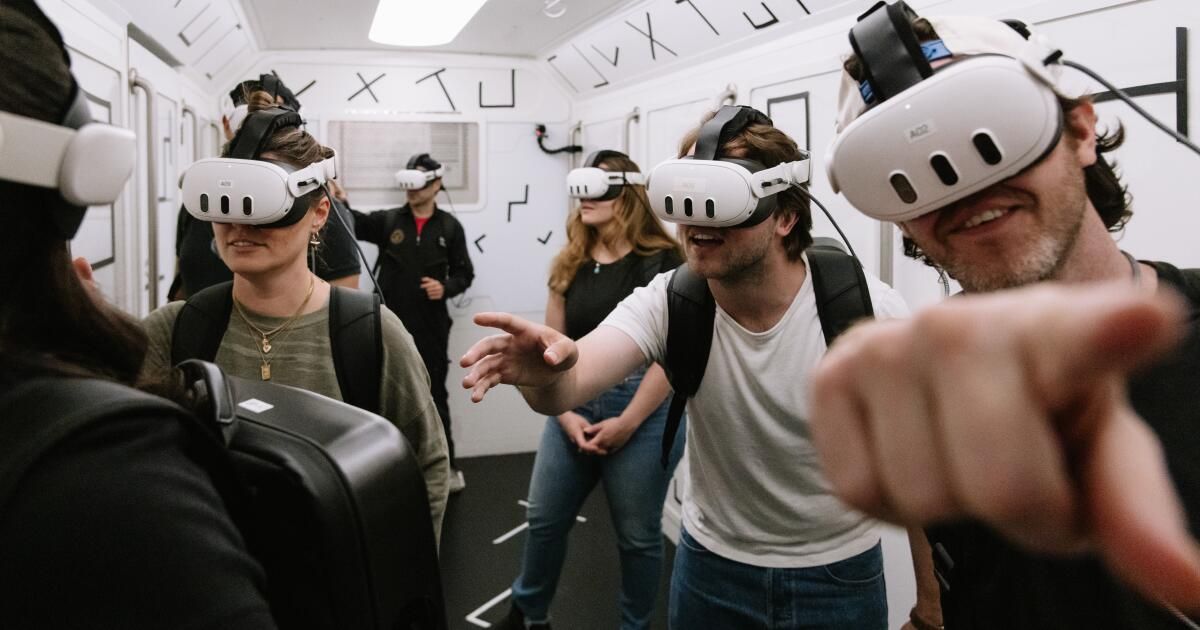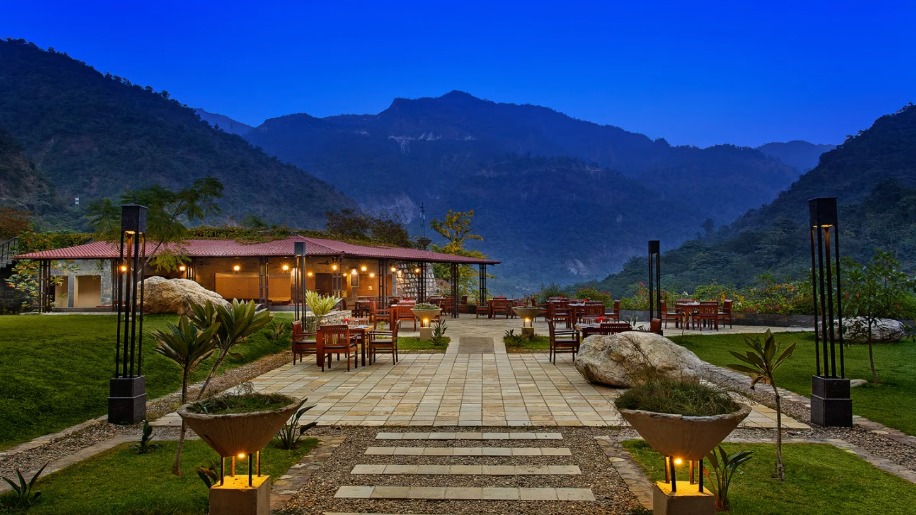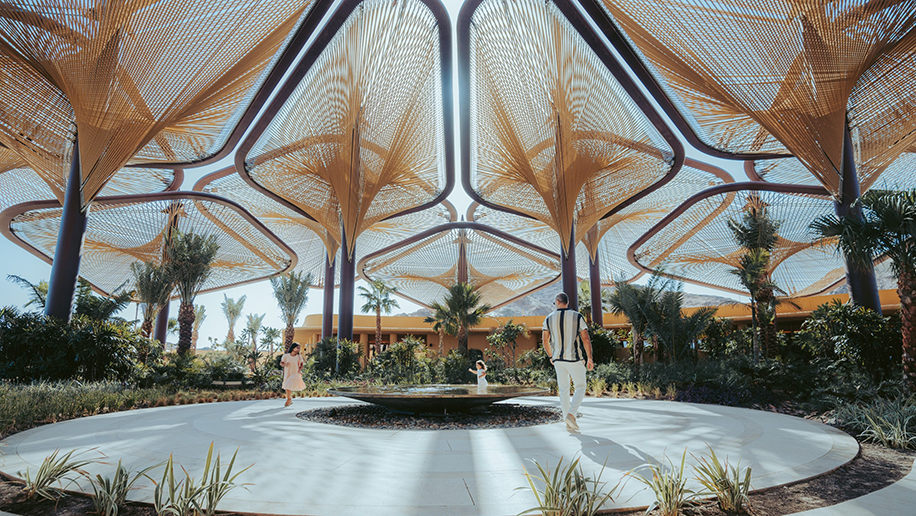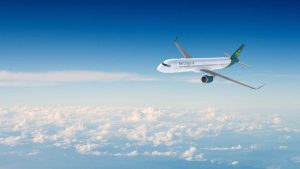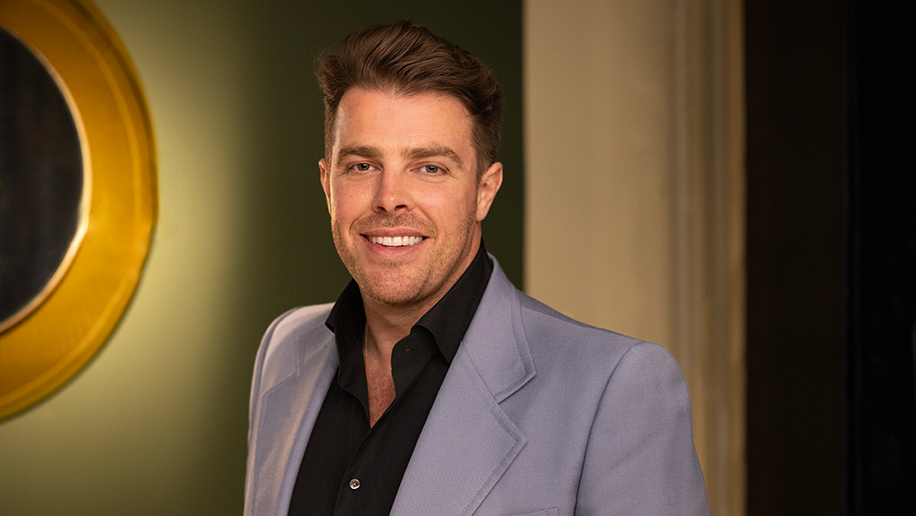I am at peace with the idea that I will not visit space in my life. The cost of space tourism is beyond the reach of me and the vast majority of Americans. However, on a recent Saturday afternoon, thanks to a mixture of virtual reality and outdated theater, I am on the moon.
Looking to my left, I see strange and blue lights abstractly blue that emerge from the gray and rocky landscape. Alberating, I can detect the stars and rebuild several constellations. Go ahead, I see the vehicle in which I am standing, technically a shipping container, moves me through the craters in a monorraíl.
This is “Lunar Light: Discovery”, experience in VR, part of the Mini-Escapas room, part of the scientific experiment and the game of the part of an act. Currently running in mid -May in Santa Monica, “Lunar Light” uses a small cast of actors to give life to the dream of visiting the moon. Virtual reality helps, of course, as our glasses hide any facet of the sight shipping container, but it is the actions that establish the pattern and sell the illusion. At all times, we will have the task of minor actions: Minero Rocks in virtual reality, for example, and the actors will lead, guide and offer moon things, all with a little bell -inspired by improvements.
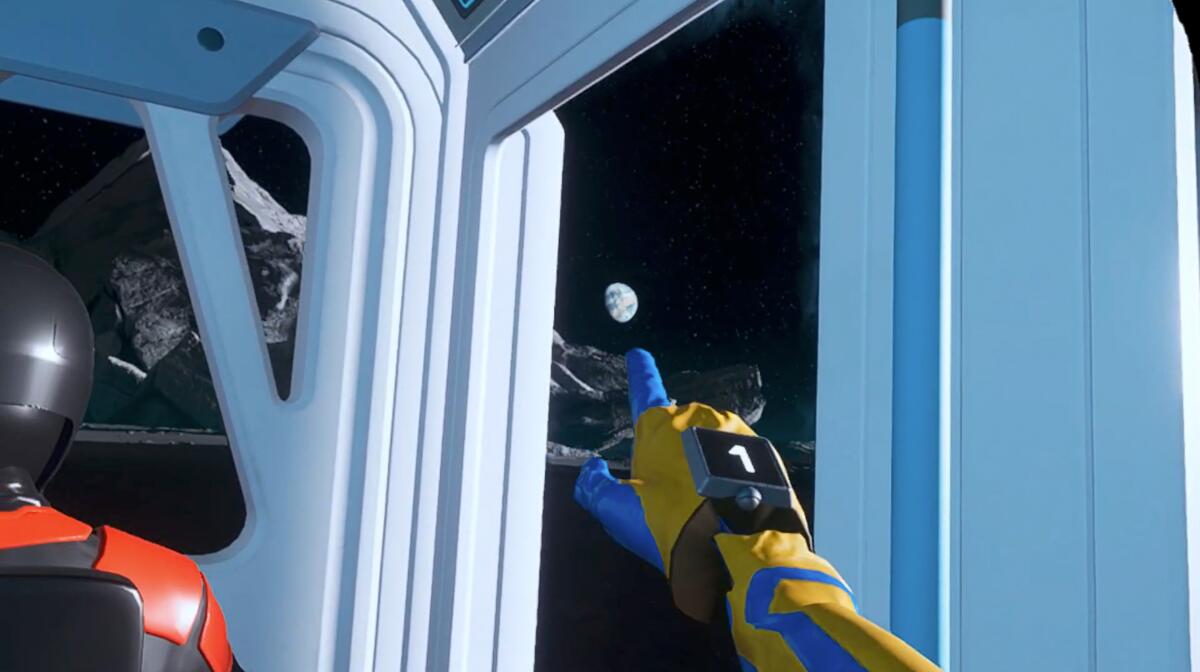
Part of “Light Light: Discovery” is actually virtual, when guests can look at digital windows to see space views. Up, a screenshot from inside the headset.
(Courtesy of lunar light: discovery)
The “lunar light” develops in 2055, when humanity has established a small community on the moon. A mysterious blue mineral has landed in the natural satellite of the earth, and is causing strange reactions: people's emotions are comically decentralized, and power and enlightenment seem unpredictable. Even a small robot, DG-33, a kind of cheesy turn in a garbage compactor, has developed some peculiarities, namely a shameless southern accent.
And yet, the “lunar light” has an underlying mission. The project, which is mixed in real science, is headed by Danielle Roosa, an actor-writer turned into a space defender. Roosa's interest in the cosmos is in his blood, since she is the granddaughter of the late astronaut of Apollo 14 Stuart Roosa. And one of his first concerts was endless in the offices of Washington, NASA DC, where he worked in the news room and multimedia.
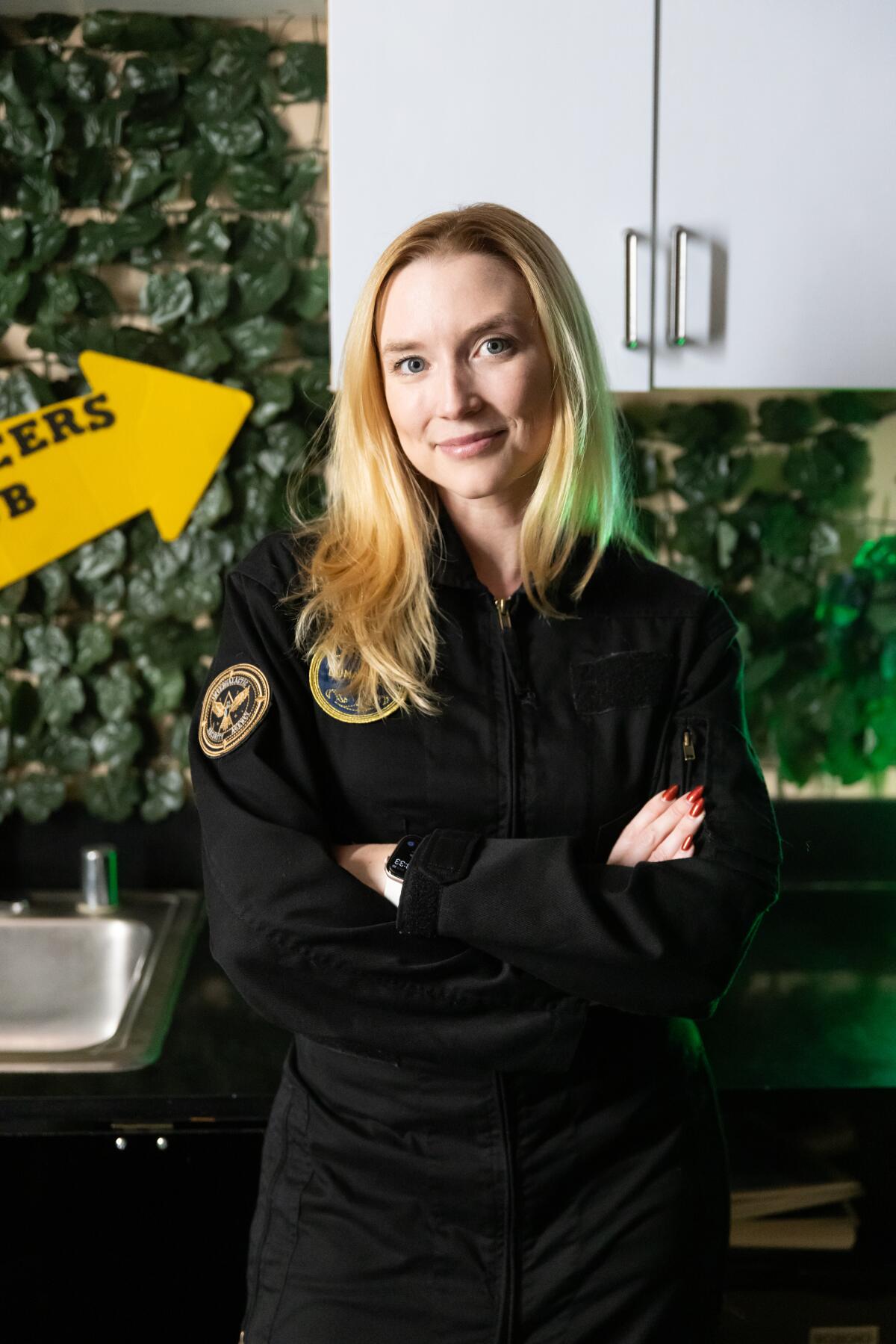
“I think the space unites people,” says Danielle Roosa, who directed the creation of “Lunar Light: Discovery.”
(Catherine Dzilenski / for the times)
“I realized much about me [college] The classmates had no idea what NASA was even doing, “says Roosa, 32 years old.” A person said: “I thought NASA was out of business.” The seed was really planted there. “
Or awake, rather.
“There is always this conversation, 'Why does space exploration?'” Says Roosa. “I think that understanding our place in the Solar System helps us better protect our home. It helps us to understand what could happen, perhaps different ways of living life, going out and finding different habits. All of them are for a better land. Even when my grandfather went to the moon, people liked people: 'Why are we doing this?' He wasn't there, but people also say it was the last time that the United States was really united.
“Lunar Light” is the first important project of the firm of Roosa Back To Space. She has great ambitions: to open a large -scale immersive installation to house “Luz Lunar” and other programs, and take the experience on the road to several museums. She perfected her commercial insight after a casual meeting on a plane with Jim Keyes, a former 7-Eleven and successful executive, who became a mentor and investor.
The installation of Santa Monica is the second emerging window of “Lunar Light”, after having had a race in Dallas in 2024. She considers a proof of concept, the first step in her ultimate goal to build a “10,000 square feet experience that is like the Disneyland of space exploration.” Investors were interested, but they encouraged it, at least at the beginning, reduce their vision.
“Okay, well,” says Roosa, remembering those conversations. “So we build it with shipping containers.”
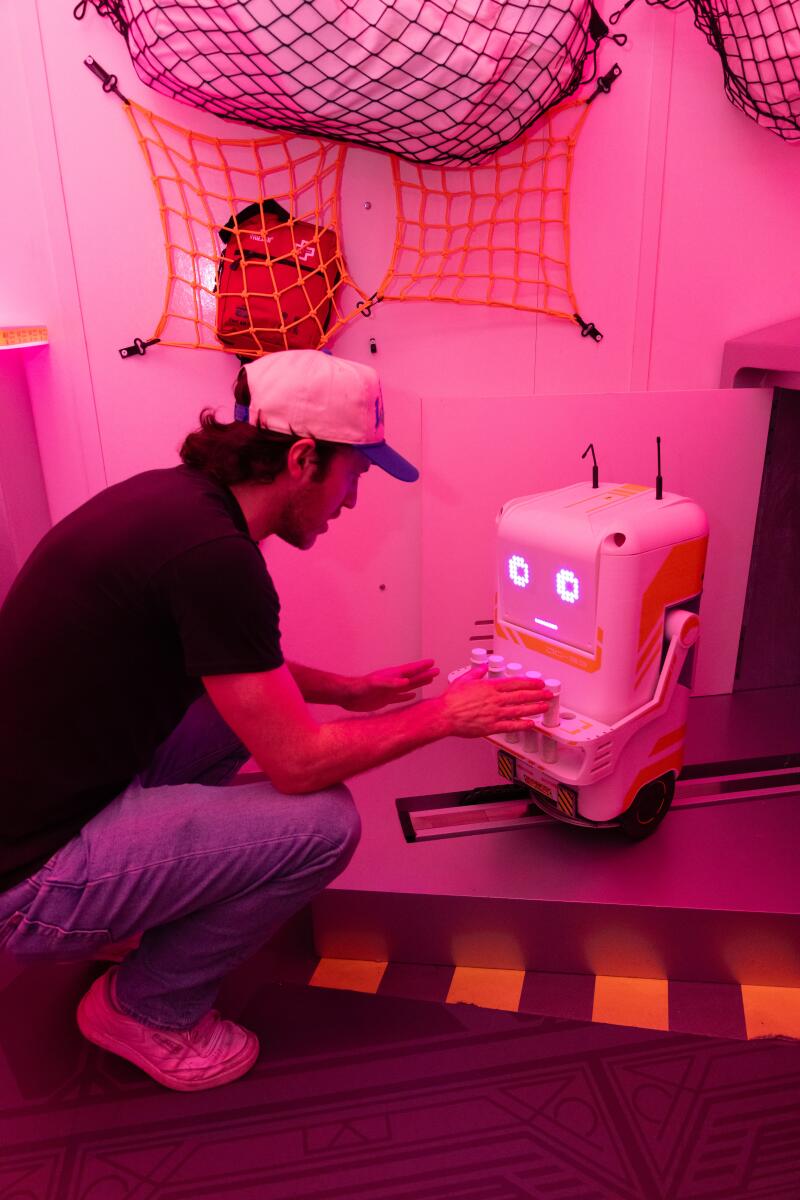
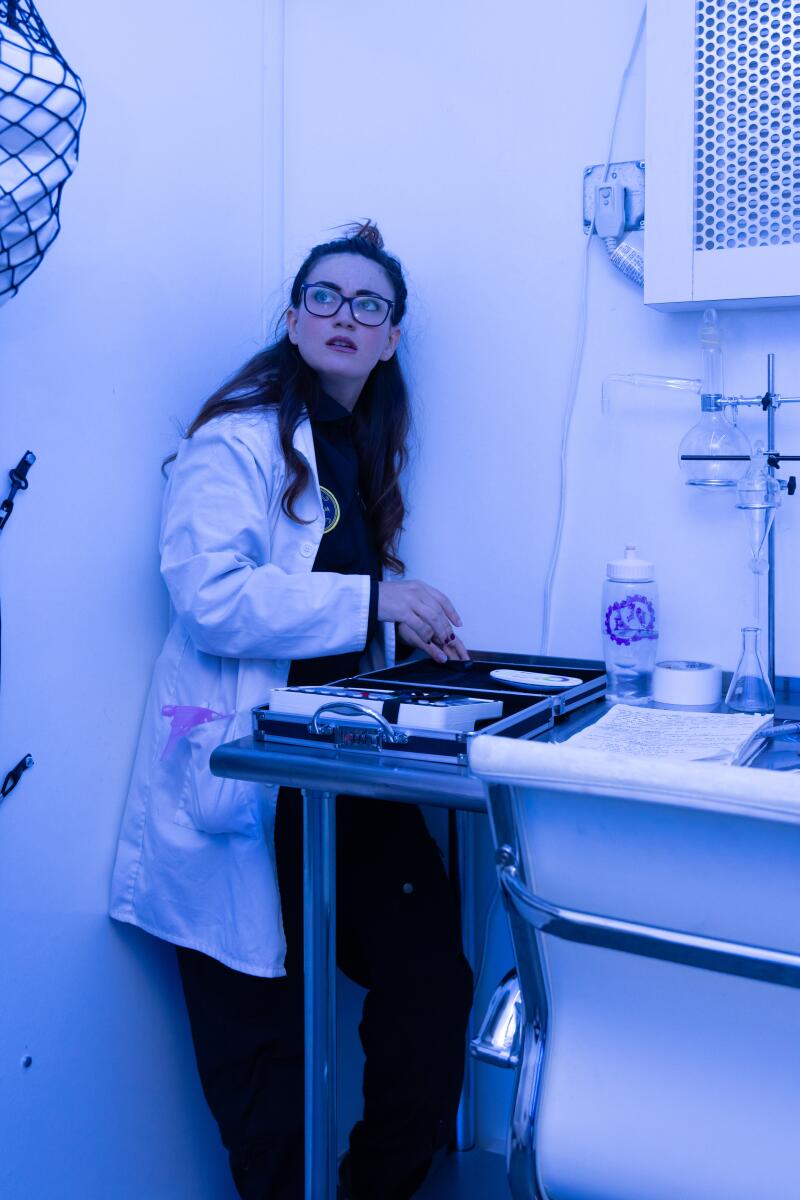
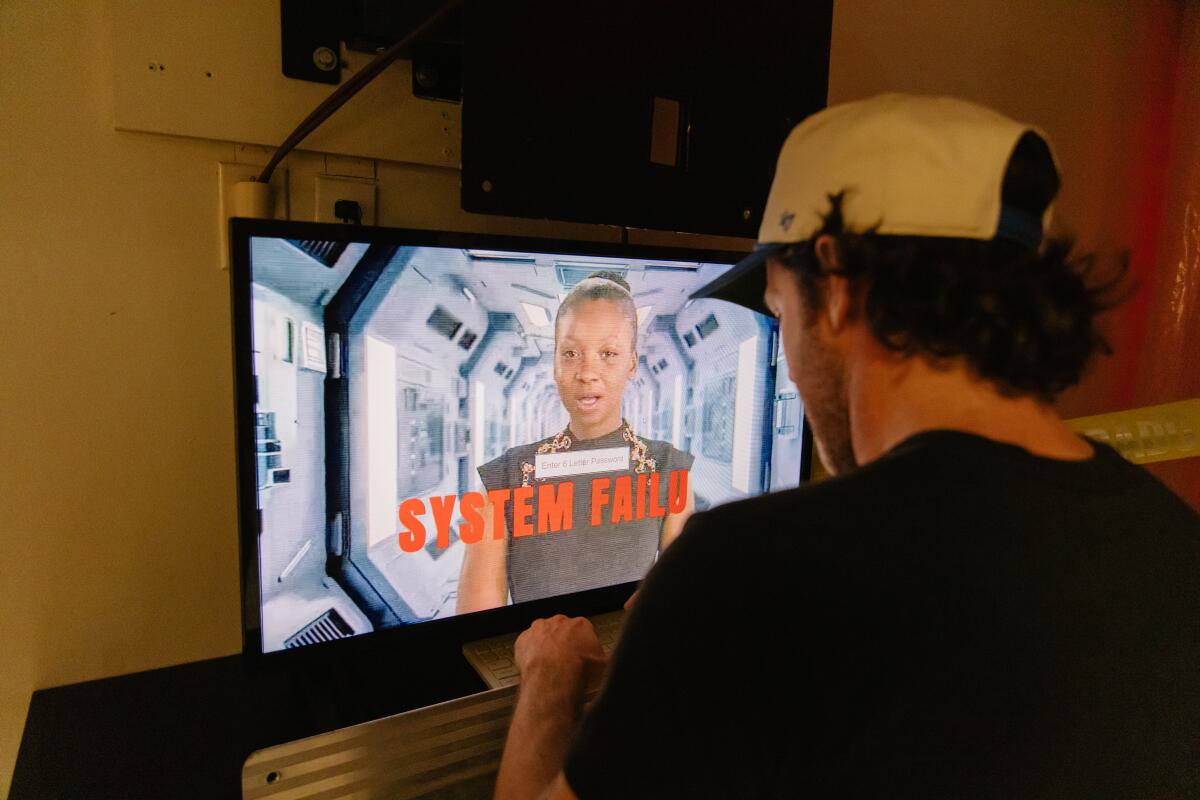
“The Lunar Light: Discovery” accumulates in a mini puzzle similar to the escape room.
(Catherine Dzilenski / for the times)
Santa Monica's experience, a little more than an hour, is only virtual for a fraction of that period. After a brief excursion on the moon and a small gamelante activity in which we extract from virtual minerals, we are in a laboratory where we will play with several crystals. There is a Tesla coil, and we will try several electric power reactions. The mood, however, is not that of a classroom, since the actor who manages the laboratory plays the scene for laughter, all that electricity is wreaking havoc in his mind.
Roosa, whose father was a military pilot, often moved during her childhood, and she says she escaped through improvisation programs such as “Who is the line anyway?” That reported the cheerful atmosphere of “Lunar Light”, and after experiencing several immersive theater shows driven by the actors, as one inspired by the Netflix series “Bridgerton”, he knew he did not want his space exploration experience to depend solely on technology.
“I think human to human contact is the only thing that will save us in the world,” says Roosa. “I obviously like virtual reality, but I think the human connection is what makes experience.”
“The discovery of lunar light”
The “lunar light” tries to use virtual reality to facilitate connection. While we are in the headphones, we can see our fellow participants. Sometimes we were asked that the five.
“Let's say there are three different groups,” says Roosa, describing how strangers could meet for the experience. “Everyone is shy.
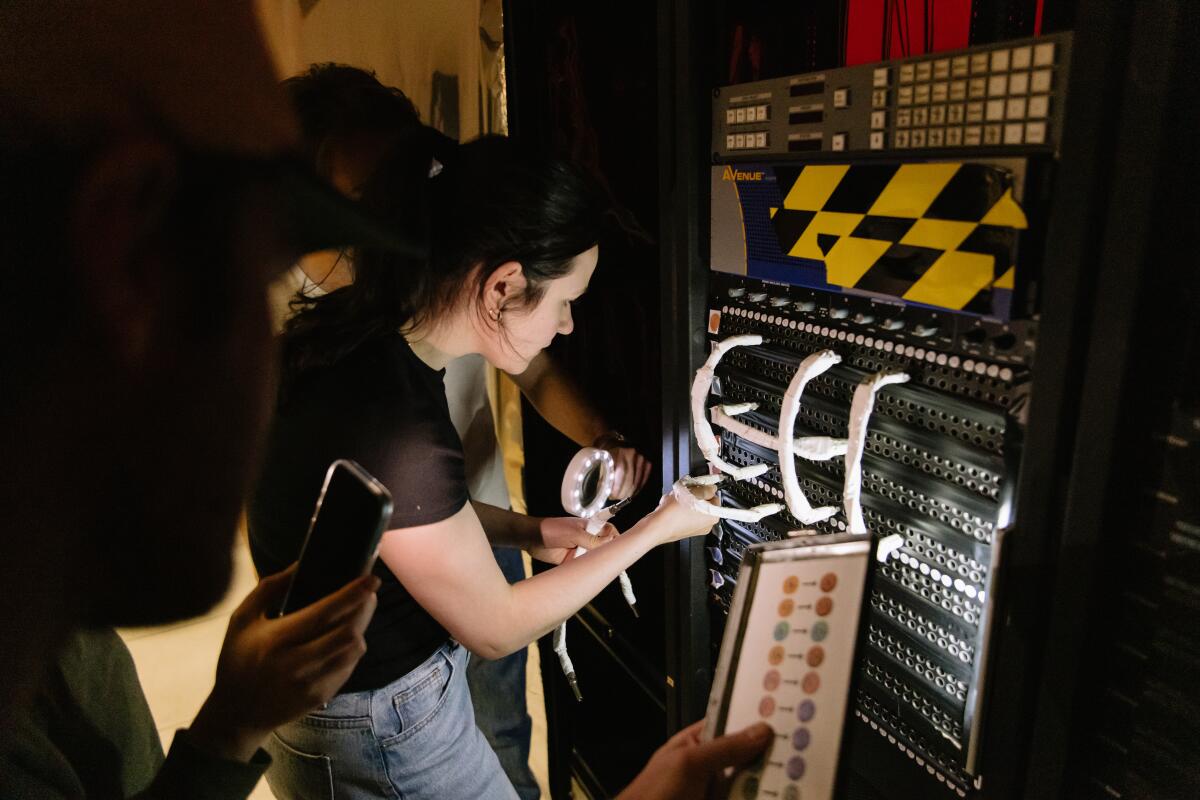
The puzzles in “The Lunar Light: Discovery” are designed with collaboration in mind.
(Catherine Dzilenski / for the times)
Ultimately, the “lunar light” accumulates in a mini exhaust room puzzles. But don't expect anything too difficult. Those slightly familiar with the challenges of the exhaust room should be able to complete it without too much fuss. Red did not want participants to get stuck, since their ultimate goal is to create emotion around space by demystifying it.
Red says that many spatial experiences are “very serious.” Then he briefly adopts an exaggerated and deeply male voice. “It is, 'We are men of science'. And I have always noticed that there is room to have fun.
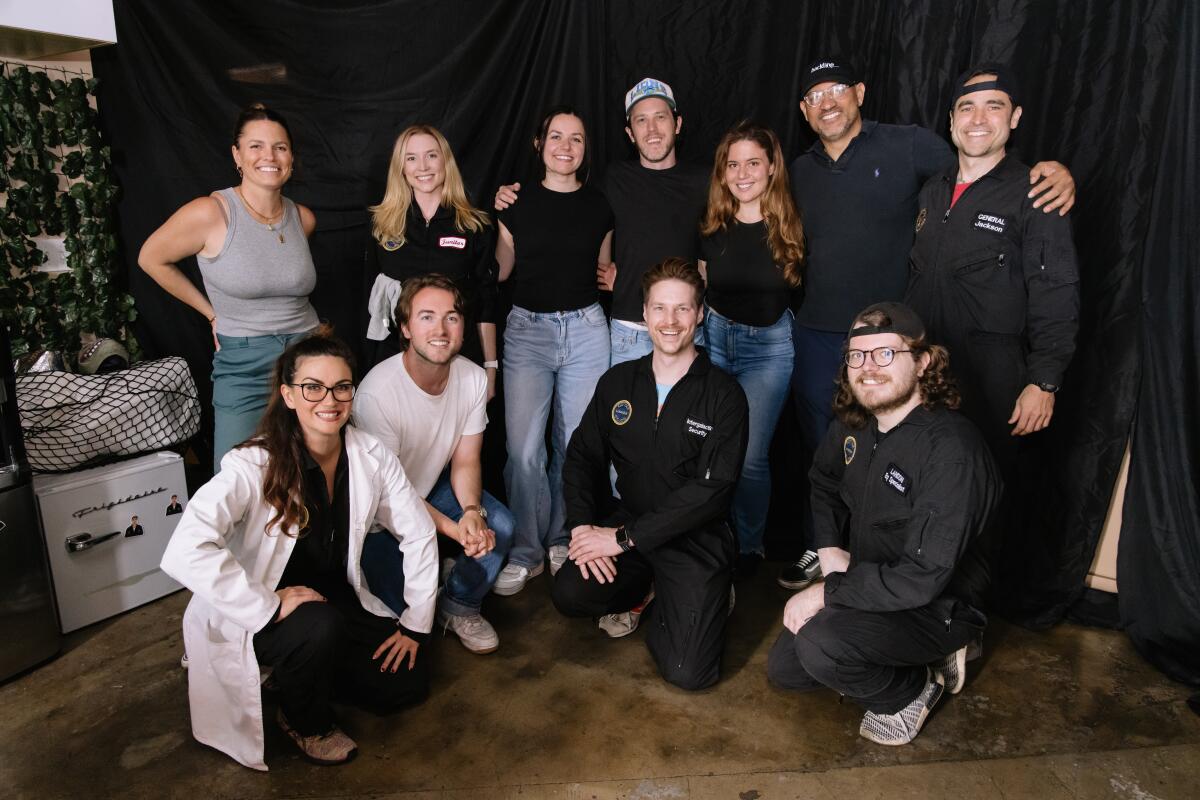
Danielle Roosa, second from the left, the rear row, and Georgia Warner, Adam Kitchen, Derek Stusynski and Landon Gorton with guests: Soren McVay, Max Cazier, Leanna Turner, Hannah May Howard, James Cerini and Eteka Huckaby during “The Lunar Light: Discovery”.
(Catherine Dzilenski / for the times)

